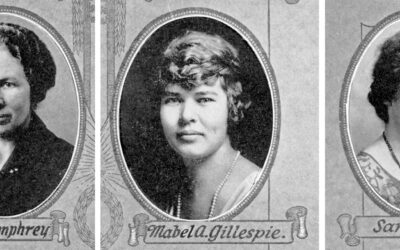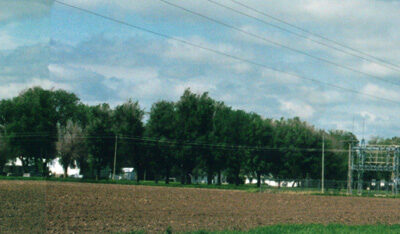The career of Edmund Richard “Hoot” Gibson (1892-1962), the cowboy film star, spanned the silent and sound era of motion pictures. Sometimes called the “Dean of Cowboy Stars,” Gibson helped to streamline and modernize early western movies. The Tekamah-born actor was also among the first of the movie stuntmen before developing into a western star and appearing in 310 films before retiring in the 1950s.
Gibson was born on August 6, 1892, in Tekamah, where his father managed the Farmers Union Store. He moved with his family to California when he was about seven years of age. Hoot’s distinctive nickname may have been bestowed by playmates because of his boyhood hobby of hunting owls or because of his job as a delivery boy for the Owl Drug Company. When a teenager, Hoot ran away from home to join a circus and worked as a cowboy in Wyoming and Colorado. In 1906 he took a job with the Miller 101 Ranch in Oklahoma. The next year he began a four-year tour with the Dick Stanley-Bud Atkinson Wild West Show. After traveling throughout America and Australia, Hoot made his first motion picture appearance in 1911 in Shotgun Jones. He often competed in rodeos and in 1912 won the title “Cowboy Champion of the World” at Pendleton, Oregon.
Gibson first became widely known after Universal Studios starred him in a series of two-reel films. During World War I he became a sergeant in the Army Tank Corps. In 1921 he got his big career break when he was cast in the film, Action, directed by John Ford, which skyrocketed him to stardom. He went on to make dozens of films for Universal until he was regarded as one of the country’s leading cowboy actors. By the mid-1920s he was producing his own films under Universal distributorship. His association with the studio lasted from 1921 until 1930, the end of the silent movie era.
After he left Universal, Gibson began appearing in features produced by smaller companies, including a series of westerns in 1931 and 1932 for Allied Pictures. After making and spending a fortune during his years as a star at Universal, Hoot’s fortunes declined. Bad investments and bad marriages hurt him financially. Unable to land any leading roles or compete with singing cowboys then flooding the screen, Gibson left Hollywood for a time and performed in circuses and western shows.
In 1941 Monogram Pictures made him a costar in the Trail Blazers series. In 1943 he retired to manage his business affairs, including many California real estate holdings. Gibson’s last leading role was in a western, The Marshal’s Daughter, in 1953. That year, he returned briefly to Nebraska, visiting old friends in Tekamah and appearing at the state fair. In 1959, John Ford brought Gibson back to the screen in a supporting role with John Wayne in The Horse Soldiers. His last screen appearance was in Oceans 11 in 1960.



